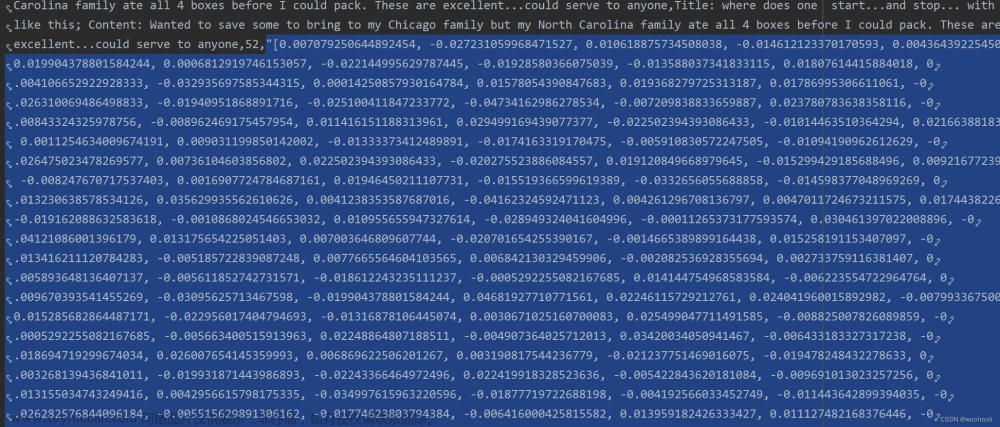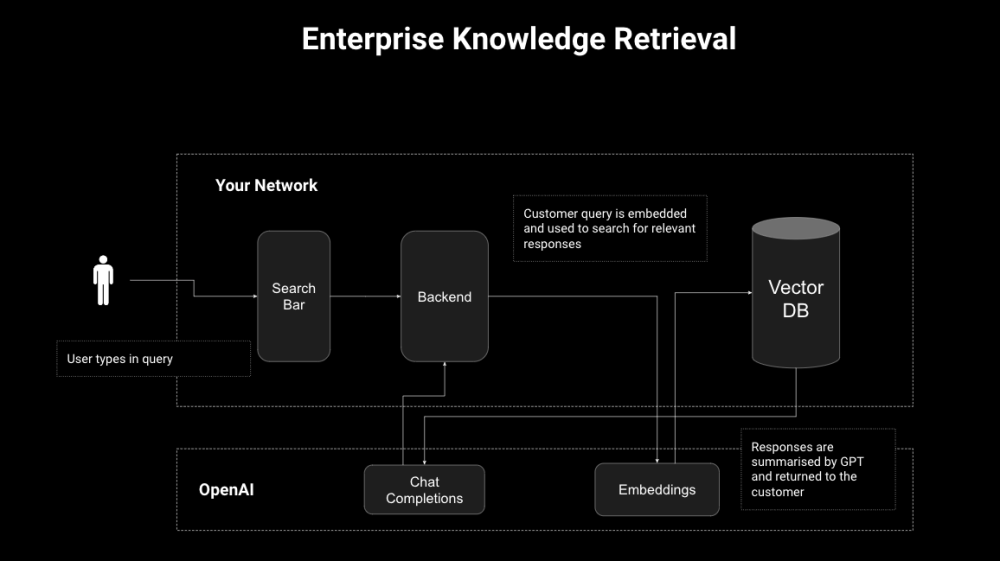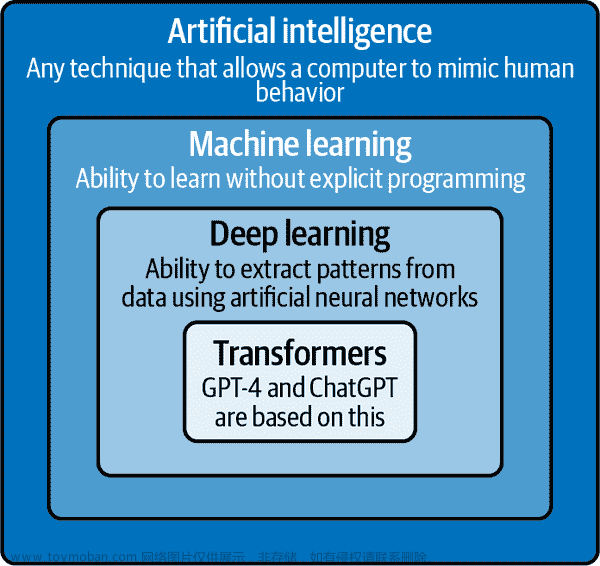第三课:GPT
1、学习总结:
GPT出现的原因
未标注的文本数据远多于已标注的文本数据,并且对于不同的下游任务会存在不同的标注方式
GPT的方法原理
半监督学习
- 基于大量未标注的文本数据,训练预训练语言模型
- 使用已标注文本数据,对模型针对某一特定下游任务进行finetune,只更改output layer(线性层)
目前存在的问题
- 自然语言处理的下游任务非常多元,难以有统一的优化目标
- 难以将预训练模型的信息完全传递到finetune的下游任务中
无监督的预训练
优化目标

模型结构
由于训练objective的选择,gpt在模型选择上不应该看见当前token后的信息,故模型应设计为单向网络,即transformer中的decoder结构。

import os
import logging
import numpy as np
import mindspore
from mindspore import nn
from mindspore import ops
from mindspore import Tensor
from mindspore.common.initializer import initializer, Normal
from mindnlp.models.gpt.gpt_config import GPTConfig
from mindnlp._legacy.nn import Dropout
from mindnlp.abc import PreTrainedModel
from mindnlp.models.utils import Conv1D, prune_conv1d_layer, find_pruneable_heads_and_indices
from mindnlp.models.utils import SequenceSummary
from mindnlp.models.activations import ACT2FN
from mindnlp import GPTConfig
# Feed-Forward 实现
class MLP(nn.Cell):
r"""
GPT MLP
"""
def __init__(self, n_state, config):
super().__init__()
n_embd = config.n_embd
self.c_fc = Conv1D(n_state, n_embd)
self.c_proj = Conv1D(n_embd, n_state)
self.act = ACT2FN[config.afn]
self.dropout = Dropout(p=config.resid_pdrop)
def construct(self, x):
h = self.act(self.c_fc(x))
h2 = self.c_proj(h)
return self.dropout(h2)
# Multi-head attention 实现
class Attention(nn.Cell):
r"""
GPT Attention
"""
def __init__(self, nx, n_positions, config, scale=False):
super().__init__()
n_state = nx
if n_state % config.n_head != 0:
raise ValueError(f"Attention n_state shape: {n_state} must be divisible by config.n_head {config.n_head}")
self.bias = Tensor(np.tril(np.ones((n_positions, n_positions))), mindspore.float32).view(1, 1, n_positions, n_positions)
self.n_head = config.n_head
self.split_size = n_state
self.scale = scale
self.c_attn = Conv1D(n_state * 3, n_state)
self.c_attn = Conv1D(n_state * 3, n_state)
self.c_proj = Conv1D(n_state, n_state)
self.attn_dropout = Dropout(p=config.attn_pdrop)
self.resid_dropout = Dropout(p=config.resid_pdrop)
self.pruned_heads = set()
self.output_attentions = config.output_attentions
def prune_heads(self, heads):
"""
Prunes heads of the model.
"""
if len(heads) == 0:
return
head_size = self.split_size//self.n_head
heads, index = find_pruneable_heads_and_indices(heads, self.n_head, head_size, self.pruned_heads)
index_attn = ops.cat([index, index + self.split_size, index + (2 * self.split_size)])
self.c_attn = prune_conv1d_layer(self.c_attn, index_attn, axis=1)
self.c_proj = prune_conv1d_layer(self.c_proj, index, axis=0)
self.split_size = (self.split_size // self.n_head) * (self.n_head - len(heads))
self.n_head = self.n_head - len(heads)
self.pruned_heads = self.pruned_heads.union(heads)
def _attn(self, q, k, v, attention_mask=None, head_mask=None):
w = ops.matmul(q, k)
if self.scale:
w = w / ops.sqrt(ops.scalar_to_tensor(v.shape[-1]))
b = self.bias[:, :, : w.shape[-2], : w.shape[-1]]
w = w * b + -1e9 * (1 - b)
if attention_mask is not None:
w = w + attention_mask
w = ops.softmax(w)
w = self.attn_dropout(w)
if head_mask is not None:
w = w * head_mask
outputs = (ops.matmul(w, v),)
if self.output_attentions:
outputs += (w,)
return outputs
def merge_heads(self, x):
"""merge heads"""
x = x.transpose(0, 2, 1, 3)
new_x_shape = x.shape[:-2] + (x.shape[-2] * x.shape[-1],)
return x.view(new_x_shape)
def split_heads(self, x, k=False):
"""split heads"""
new_x_shape = x.shape[:-1] + (self.n_head, x.shape[-1] // self.n_head)
x = x.view(new_x_shape)
if k:
return x.transpose(0, 2, 3, 1)
return x.transpose(0, 2, 1, 3)
def construct(self, x, attention_mask=None, head_mask=None):
x = self.c_attn(x)
query, key, value = ops.split(x, self.split_size, axis=2)
query = self.split_heads(query)
key = self.split_heads(key, k=True)
value = self.split_heads(value)
attn_outputs = self._attn(query, key, value, attention_mask, head_mask)
a = attn_outputs[0]
a = self.merge_heads(a)
a = self.c_proj(a)
a = self.resid_dropout(a)
outputs = (a,) + attn_outputs[1:]
return outputs
class Block(nn.Cell):
r"""
GPT Block
"""
def __init__(self, n_positions, config, scale=False):
super().__init__()
nx = config.n_embd
self.attn = Attention(nx, n_positions, config, scale)
self.ln_1 = nn.LayerNorm((nx,), epsilon=config.layer_norm_epsilon)
self.mlp = MLP(4 * nx, config)
self.ln_2 = nn.LayerNorm((nx,), epsilon=config.layer_norm_epsilon)
def construct(self, x, attention_mask=None, head_mask=None):
output_attn = self.attn(
x,
attention_mask=attention_mask,
head_mask=head_mask
)
a = output_attn[0]
n = self.ln_1(x + a)
m = self.mlp(n)
h = self.ln_2(n + m)
outputs = (h,) + output_attn[1:]
return outputs
class GPTPreTrainedModel(PreTrainedModel):
"""BertPretrainedModel"""
convert_torch_to_mindspore = torch_to_mindspore
pretrained_model_archive_map = PRETRAINED_MODEL_ARCHIVE_MAP
config_class = GPTConfig
base_model_prefix = 'transformer'
def _init_weights(self, cell):
"""Initialize the weights"""
if isinstance(cell, nn.Dense):
cell.weight.set_data(initializer(Normal(self.config.initializer_range),
cell.weight.shape, cell.weight.dtype))
if cell.has_bias:
cell.bias.set_data(initializer('zeros', cell.bias.shape, cell.bias.dtype))
elif isinstance(cell, nn.Embedding):
embedding_table = initializer(Normal(self.config.initializer_range),
cell.embedding_table.shape,
cell.embedding_table.dtype)
if cell.padding_idx is not None:
embedding_table[cell.padding_idx] = 0
cell.embedding_table.set_data(embedding_table)
elif isinstance(cell, nn.LayerNorm):
cell.gamma.set_data(initializer('ones', cell.gamma.shape, cell.gamma.dtype))
cell.beta.set_data(initializer('zeros', cell.beta.shape, cell.beta.dtype))
class GPTModel(GPTPreTrainedModel):
"""
The bare GPT transformer model outputting raw hidden-states without any specific head on top
"""
def __init__(self, config):
super().__init__(config)
self.config = config
self.tokens_embed = nn.Embedding(config.vocab_size, config.n_embd)
self.positions_embed = nn.Embedding(config.n_positions, config.n_embd)
self.drop = nn.Dropout(p=config.embd_pdrop)
self.h = nn.CellList([Block(config.n_positions, config, scale=True) for _ in range(config.n_layer)])
self.position_ids = ops.arange(config.n_positions)
self.n_layer = self.config.n_layer
self.output_attentions = self.config.output_attentions
self.output_hidden_states = self.config.output_hidden_states
def get_input_embeddings(self):
"""
return the input embeddings layer
"""
return self.tokens_embed
def set_input_embeddings(self, value):
"""
set the input embeddings layer
"""
self.tokens_embed = value
def _prune_heads(self, heads_to_prune):
"""
Prunes heads of the model. heads_to_prune: dict of {layer_num: list of heads to prune in this layer}
"""
for layer, heads in heads_to_prune.items():
self.h[layer].attn.prune_heads(heads)
def construct(
self,
input_ids=None,
attention_mask=None,
token_type_ids=None,
position_ids=None,
head_mask=None,
inputs_embeds=None,
):
if input_ids is not None and inputs_embeds is not None:
raise ValueError("You cannot specify both input_ids and inputs_embeds at the same time")
if input_ids is not None:
input_shape = input_ids.shape
input_ids = input_ids.view(-1, input_shape[-1])
elif inputs_embeds is not None:
input_shape = inputs_embeds.shape[:-1]
else:
raise ValueError("You have to specify either input_ids or inputs_embeds")
if position_ids is None:
position_ids = self.position_ids[None, : input_shape[-1]]
if attention_mask is not None:
attention_mask = attention_mask.unsqueeze(1).unsqueeze(2)
attention_mask = attention_mask.to(dtype=next(self.parameters()).dtype)
attention_mask = (1.0 - attention_mask) * Tensor(np.finfo(mindspore.dtype_to_nptype(self.dtype)).min,
self.dtype)
head_mask = self.get_head_mask(head_mask, self.n_layer)
if inputs_embeds is None:
inputs_embeds = self.tokens_embed(input_ids)
position_embeds = self.positions_embed(position_ids)
if token_type_ids is not None:
token_type_ids = token_type_ids.view(-1, token_type_ids.shape[-1])
token_type_embeds = self.tokens_embed(token_type_ids)
else:
token_type_embeds = 0
hidden_states = inputs_embeds + position_embeds + token_type_embeds
hidden_states = self.drop(hidden_states)
output_shape = input_shape + (hidden_states.shape[-1],)
all_attentions = ()
all_hidden_states = ()
for i, block in enumerate(self.h):
if self.output_hidden_states:
all_hidden_states = all_hidden_states + (hidden_states,)
outputs = block(hidden_states, attention_mask, head_mask[i])
hidden_states = outputs[0]
if self.output_attentions:
all_attentions = all_attentions + (outputs[1],)
hidden_states = hidden_states.view(*output_shape)
if self.output_hidden_states:
all_hidden_states = all_hidden_states + (hidden_states,)
return (hidden_states, all_hidden_states, all_attentions)
监督微调
在已经预训练好的GPT上额外加一层线性层

并通过缩小目标与计算结果的误差进行模型优化

最终为加速模型收敛及提高模型的泛化性,融入pretrain时language modelling的优化目标

# 文本序列分类任务
class GPTForSequenceClassification(GPTPreTrainedModel):
"""
The Original GPT Model transformer with a sequence classification head on top (linear layer).
GPTForSequenceClassification uses the last token in order to do the classification, as other causal
models (e.g. GPT-2) do. Since it does classification on the last token, it requires to know the position of the
last token. If a `pad_token_id` is defined in the configuration, it finds the last token that is not a padding
token in each row. If no `pad_token_id` is defined, it simply takes the last value in each row of the batch. Since
it cannot guess the padding tokens when `inputs_embeds` are passed instead of `input_ids`, it does the same (take
the last value in each row of the batch).
"""
def __init__(self, config):
super().__init__(config)
self.config = config
self.num_labels = config.num_labels
self.transformer = GPTModel(config)
self.score = nn.Dense(config.n_embd, self.num_labels, has_bias=False)
self.pad_token_id = self.config.pad_token_id
problem_type = config.problem_type
if problem_type is None:
self.loss = None
else:
if self.num_labels == 1:
self.problem_type = "regression"
self.loss = nn.MSELoss()
elif self.num_labels > 1:
self.problem_type = "single_label_classification"
self.loss = nn.CrossEntropyLoss()
else:
self.problem_type = "multi_label_classification"
self.loss = nn.BCEWithLogitsLoss()
def construct(
self,
input_ids = None,
attention_mask = None,
token_type_ids = None,
position_ids = None,
head_mask = None,
inputs_embeds = None,
labels = None,
):
r"""
labels (`torch.LongTensor` of shape `(batch_size,)`, *optional*):
Labels for computing the sequence classification/regression loss. Indices should be in
`[0, ...,config.num_labels - 1]`.
If `config.num_labels == 1` a regression loss is computed (Mean-Square loss), If
`config.num_labels > 1` a classification loss is computed (Cross-Entropy).
"""
transformer_outputs = self.transformer(
input_ids,
attention_mask=attention_mask,
token_type_ids=token_type_ids,
position_ids=position_ids,
head_mask=head_mask,
inputs_embeds=inputs_embeds,
)
hidden_states = transformer_outputs[0]
logits = self.score(hidden_states)
if input_ids is not None:
batch_size, _ = input_ids.shape[:2]
else:
batch_size, _ = inputs_embeds.shape[:2]
if self.pad_token_id is None and batch_size != 1:
raise ValueError("Cannot handle batch sizes > 1 if no padding token is defined.")
if self.pad_token_id is None:
sequence_lengths = -1
else:
if input_ids is not None:
sequence_lengths = ops.ne(input_ids, self.pad_token_id).sum(-1) - 1
else:
sequence_lengths = -1
pooled_logits = logits[:, sequence_lengths]
loss = None
output = (pooled_logits,) + transformer_outputs[1:]
if labels is not None:
if self.num_labels == 1:
loss = self.loss(pooled_logits.squeeze(), labels.squeeze())
elif self.num_labels > 1:
loss = self.loss(pooled_logits.view(-1, self.num_labels), labels.view(-1))
else:
loss = self.loss(pooled_logits, labels)
if loss is not None:
output = (loss,) + output
return output
课程ppt及代码地址
-
github地址(网络不好的可以访问下面我克隆到gitee上的地址):GPT
-
gitee地址:GPT
2、学习心得:
通过本次学习,熟悉了Mindspore这个国产深度学习框架,也对GPT的基本技术原理有所了解,同时也学会了如何在IMDb数据集上微调GPT完成一个情感分类的任务,比较有成就感!!!另外就是Selina小姐姐讲课的氛围比较轻松,学起来比较快乐!
3、经验分享:
在启智openI上的npu跑时记得使用mindspore1.7的镜像,同时安装对应mindnlp的版本,不然可能会因为版本不兼容而报错。另外就是IMDB情感分类任务的微调练习一定要做,这样能比较get到整个微调的全流程是怎样的,后面再去学习llama等模型的微调时就会更加得心应手。
4、课程反馈:
本次课程中的代码串讲我觉得是做的最好的地方,没有照着ppt一直念,而是在jupyter lab上把代码和原理结合到一块进行讲解,让学习者对代码的理解更加深入。我觉得内容的最后可以稍微推荐一下与Mindspore大模型相关的套件,让学习者在相关套件上可以开发出更多好玩和有趣的东西!
5、使用MindSpore昇思的体验和反馈:
MindSpore昇思的优点和喜欢的方面:
- 灵活性和可扩展性: MindSpore提供了灵活的编程模型,支持静态计算图和动态计算图。这种设计使得它适用于多种类型的机器学习和深度学习任务,并且具有一定的可扩展性。
- 跨平台支持: MindSpore支持多种硬件平台,包括CPU、GPU和NPU等,这使得它具有在不同设备上运行的能力,并能充分利用各种硬件加速。
- 自动并行和分布式训练: MindSpore提供了自动并行和分布式训练的功能,使得用户可以更轻松地处理大规模数据和模型,并更高效地进行训练。
- 生态系统和社区支持: MindSpore致力于建立开放的生态系统,并鼓励社区贡献,这对于一个开源框架来说非常重要,能够帮助用户更好地学习和解决问题。
一些建议和改进方面:文章来源:https://www.toymoban.com/news/detail-809854.html
- 文档和教程的改进: 文档和教程并不是很详细,希望能够提供更多实用的示例、详细的文档和教程,以帮助用户更快速地上手和解决问题。
- 更多的应用场景示例: 提供更多真实场景的示例代码和应用案例,可以帮助用户更好地了解如何在实际项目中应用MindSpore。
6、未来展望:
大模型的内容还是很多的,希望自己能坚持打卡,将后面的内容都学习完,并做出一些有趣好玩的东西来!文章来源地址https://www.toymoban.com/news/detail-809854.html
到了这里,关于第三课:GPT的文章就介绍完了。如果您还想了解更多内容,请在右上角搜索TOY模板网以前的文章或继续浏览下面的相关文章,希望大家以后多多支持TOY模板网!











